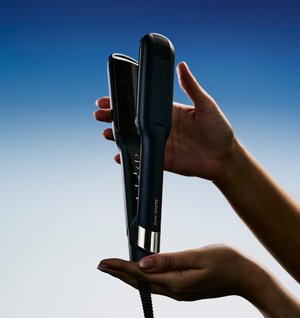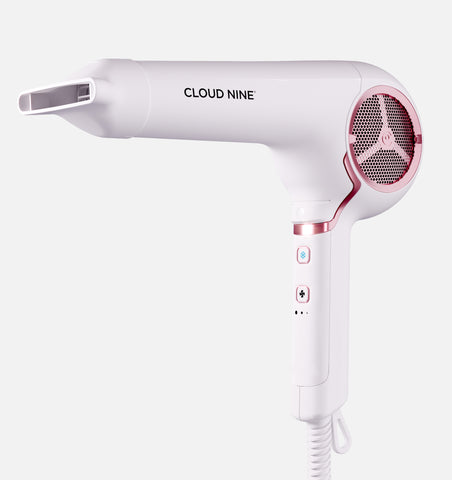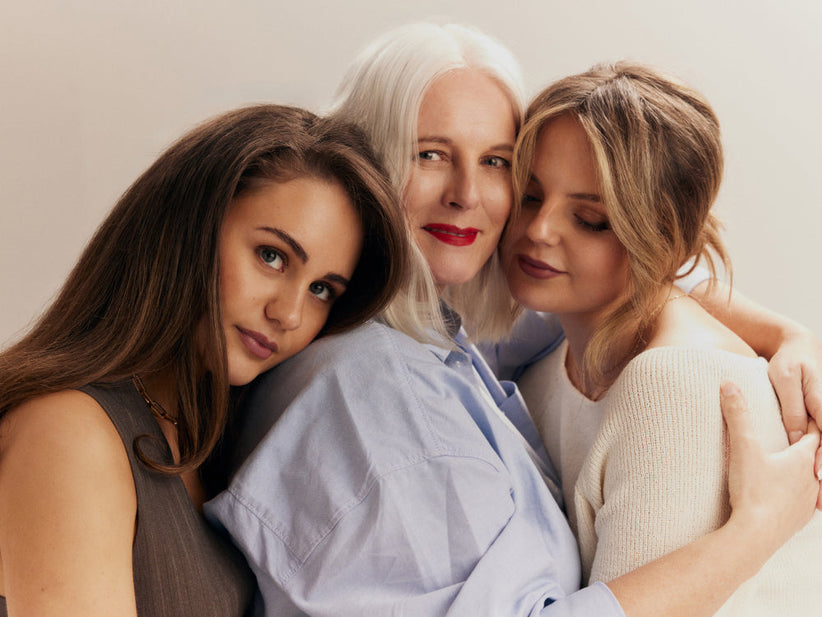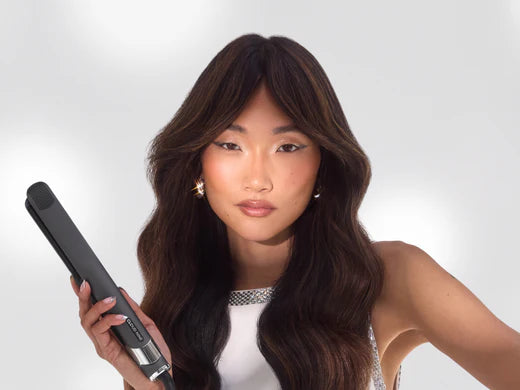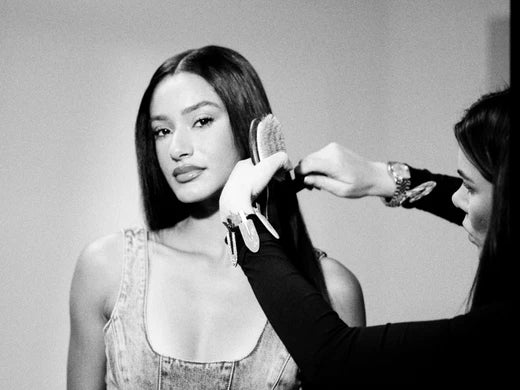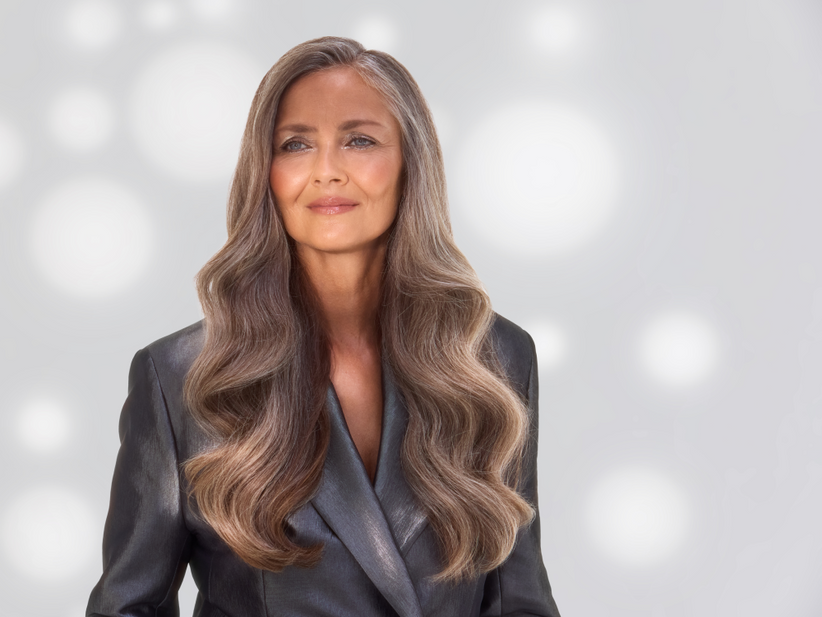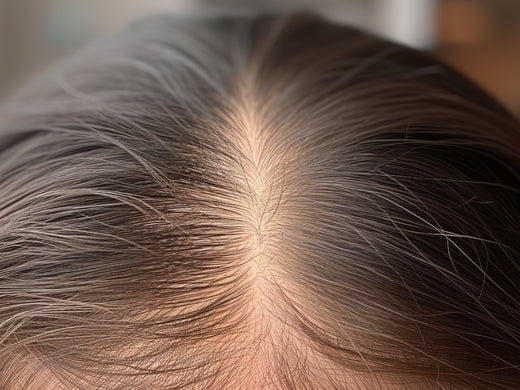KEY TAKEAWAYS
- Medically induced early menopause happens when certain medical treatments or surgeries cause your ovaries to stop working earlier than they normally would.
- Symptoms of medically induced early menopause can include thinning hair on all areas of the body, dry, dull, or sensitive skin, and nails that are brittle or discoloured.
- These changes can understandably feel overwhelming, but they are common and manageable.
- Symptoms of medically induced early menopause tend to be more intense than those of natural menopause.
- Managing hair changes during medically induced early menopause can feel overwhelming, but options like gentle haircare, protective styling, and HRT can help regain confidence.
WHAT IS MEDICALLY INDUCED EARLY MENOPAUSE?
Medically induced early menopause happens when certain treatments or surgeries (like chemotherapy or endometriosis surgery) cause the ovaries to stop working early. While natural menopause usually happens gradually in your 40s or 50s, medically induced menopause can happen suddenly and often comes with more intense symptoms – like hot flushes, mood swings, and trouble sleeping. This can be a temporary or permanent change, depending on the treatment and how much damage is done to the ovaries.
WHAT CAUSES MEDICALLY INDUCED EARLY MENOPAUSE?
Several medical treatments can trigger early menopause, including:
- Chemotherapy – While often essential for treating cancer, this process can also damage the ovaries because they contain fast-dividing cells, just like cancer. This can lead to a sudden drop in hormone levels and stop your periods.
- Radiation therapy – Another common cancer treatment, which, when aimed at the pelvic area, can also harm the ovaries and cause a sudden onset of menopause.
- Surgery – If your ovaries are removed (oophorectomy) or you have a radical hysterectomy, which takes out your uterus and nearby tissues, it results in immediate menopause.
Other treatments, like hormone therapy for breast cancer, might temporarily shut down your ovaries to lower oestrogen levels, but when the therapy ends, ovarian function may return.
These treatments are often necessary for managing conditions like cancer or endometriosis. Every case is different. If you are concerned about the side effects of a treatment you are undergoing, ask your doctor or nurse for more guidance.
SYMPTOMS OF MEDICALLY INDUCED EARLY MENOPAUSE
Medically induced early menopause can bring a range of symptoms, including changes to the:
- Hair: Hair may thin or fall out entirely from your scalp, eyebrows, eyelashes, and body.
- Skin: Hormonal fluctuations may lead to dry or dull skin, making your complexion look different and feel more sensitive to skincare products.
- Nails: Nails may become brittle or discoloured, sometimes peeling or developing ridges.
These changes can understandably feel overwhelming, but it’s important to know that they are both common and manageable, and you’re not alone in navigating them.
Symptoms of natural menopause vs medically induced early menopause
While both natural and medically induced early menopause cause similar symptoms, there are some differences in their:
- Timing: Natural menopause usually occurs gradually in your late 40s or early 50s, while chemo-induced early menopause can happen suddenly, especially in women over 40.
- Intensity: Symptoms of early menopause due to medical treatments such as chemotherapy, including hot flushes, fatigue, and hair loss, can be more intense and immediate than in natural menopause.
“Confidence isn't something that just comes to you - you don't just wake up one day and feel confident. It takes time, it's a journey of its own. Once you're brave enough to do something, the confidence will follow.”
HOW TO TREAT MEDICALLY INDUCED EARLY MENOPAUSAL HAIR LOSS
Managing hair changes during medically induced early menopause can feel daunting, but there are many ways to regain control and reclaim your confidence:
Be gentle with your hair
Use sulphate-free shampoos and conditioners that nourish your hair and scalp. Look for products containing natural ingredients like jojoba, coconut, or aloe vera to protect your hair’s strength and shine. Speak to your doctor or nurse for more advice about products that are compatible with your treatment.
Use a nourishing conditioner
CLOUD NINE’s Magical Remedy is the perfect 3-in-1 hair product for taking care of dry or brittle hair. It contains natural moisturising ingredients that help strengthen each strand and can be used as a wash-out or leave-in conditioner. It can also be used as a hydrating hair mask after shampooing.
Use heat protection
If you regularly blow-dry, curl or straighten your hair, there’s no need to stop in early menopause. Always use a heat protectant like our Magical Quick Dry Potion, which is packed full of nourishing goodness to help protect your hair from heat styling.
Turn down the heat
Using excessive heat on your hair can damage it, especially if it’s also been affected by medical treatments. Head to our Temperature Calculator to answer some quick questions about your hair and find out which temperature is the best one for you.
Use heated styling tools that care for your hair
While going through treatment, you can still use hair dryers, straighteners, and curlers on your hair. But choose tools that have expert technology to protect your hair. Try the CLOUD NINE 2-in-1 Contouring Iron Pro – a straightener and curler in one. Its curved ceramic plates can straighten your hair or add waves or curls for versatile styling. Revive ModeTM vibrates the plates using Axial VibrationTM technology to reduce the heat contact on your fragile hair, keeping it healthier while helping you achieve your desired style.
Sleep on a silk pillowcase
A satin or silk pillowcase is a great – and comfortable – way to reduce hair breakage while you sleep.
Enjoy a balanced diet
Nutrient-rich foods containing vitamins like biotin, zinc, and omega-3 fatty acids can help keep your hair healthy through early menopause. Ask your doctor before starting any new supplements, and take a look at our nutrition guide for more info about how what you consume impacts your hair’s health.
Try hormone replacement therapy (HRT)
HRT can help with the hormonal imbalance that leads to symptoms like hair thinning. Your doctor can help you decide whether this treatment is suitable for you.
Experiment with wigs & scarves
Wig styling or beautiful scarves can help you feel like yourself – especially if you’ve had hair loss or changes following chemotherapy-induced early menopause . There are many natural-looking wigs, and professionals can help you choose the perfect style for you.
“Losing my hair really stripped me of my confidence and I had to find new ways to be confident - whether it was wearing wigs, headscarves, or styling the little hair I had.”
FAQS ABOUT MEDICALLY INDUCED EARLY MENOPAUSE
How long does medically induced early menopause last?
Medically induced early menopause can be permanent, but for some women, periods may return post-treatment. Individual bodies can react differently to the same treatments. Keep your doctor and nurses close throughout your treatment as they will be able to advise you and answer any questions you have about your early menopause journey.
Can medically induced early menopause be reversed?
In some cases, particularly for women under 40, normal periods may resume after treatment. For others, menopause may be irreversible.
Is medically induced early menopause worse than natural menopause?
Medically induced early menopause symptoms tend to be more intense due to the sudden and severe hormonal shifts caused by chemotherapy and other treatments.
How can I cope with medically induced early menopause?
Stay hydrated, eat a balanced diet, and try local support groups for emotional support and coping strategies. You could also ask your doctor whether HRT could be a viable option to manage your physical symptoms.
Can I still use heated styling tools during medically induced early menopause?
Depending on your doctor’s advice, you may be able to use hair dryers, straighteners, and curlers on your hair during or after medically induced early menopause. If you are able to, make sure you style your hair at a low heat and use tools that have expert haircare technology built in, like the CLOUD NINE 2-in-1 Contouring Iron Pro. Check out our Temperature Calculator to find out the perfect heat setting for your hair.
For more information about menopause, read our guide to menopausal hair. You’ll also find our Healthy Hair Hub jam-packed with tips and advice for caring for and styling your hair. We’d also love to hear from you on our socials – head to TikTok, Instagram or Facebook to connect.












